Missing Letters Worksheets for Ages 3-9
7 filtered results
-
From - To
Engage young learners with our Missing Letters Worksheets designed for ages 3-9. These fun and educational resources help children master the alphabet by identifying missing letters from various points in each sequence. Perfect for preschool through early elementary, our worksheets enhance letter recognition, sequencing skills, and cognitive development. With vibrant visuals and age-appropriate challenges, kids stay motivated and engaged. Ideal for both classroom and home use, our printable worksheets are a great supplement to any literacy curriculum. Watch as the building blocks of reading and writing come together, one letter at a time!
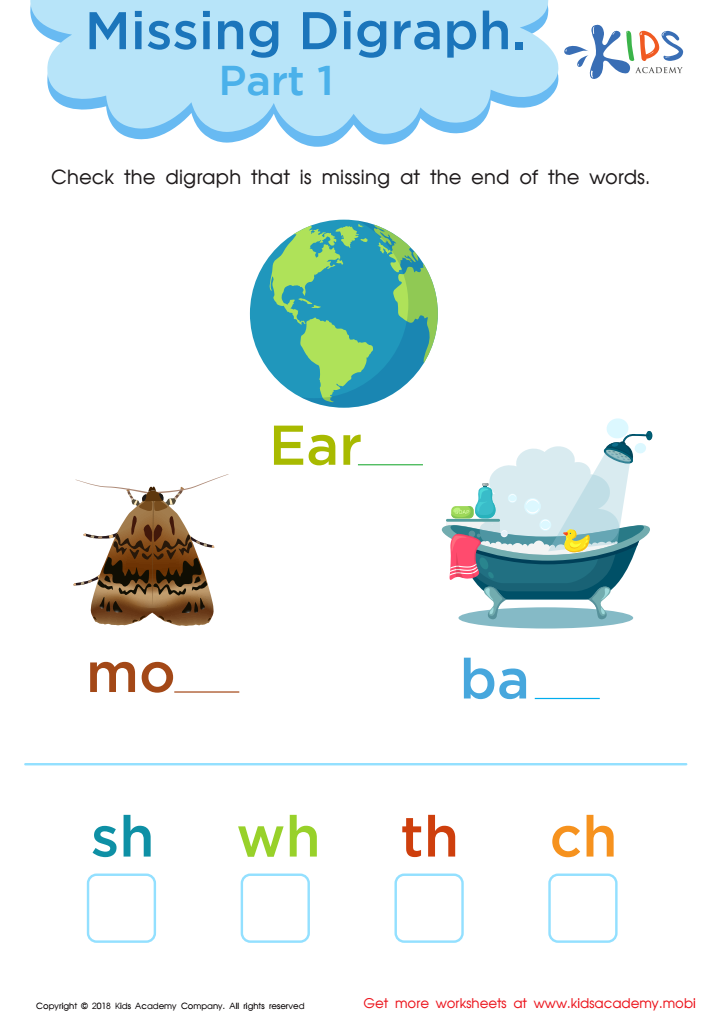

Missing Digraph: Part 1 Worksheet
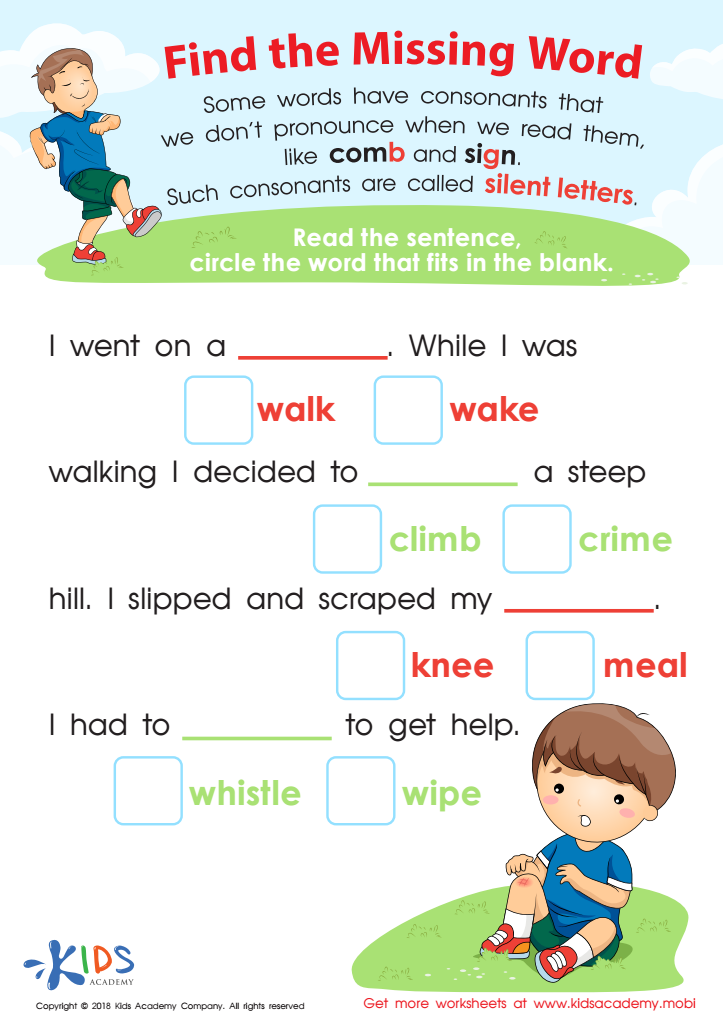

Find The Missing Word Worksheet
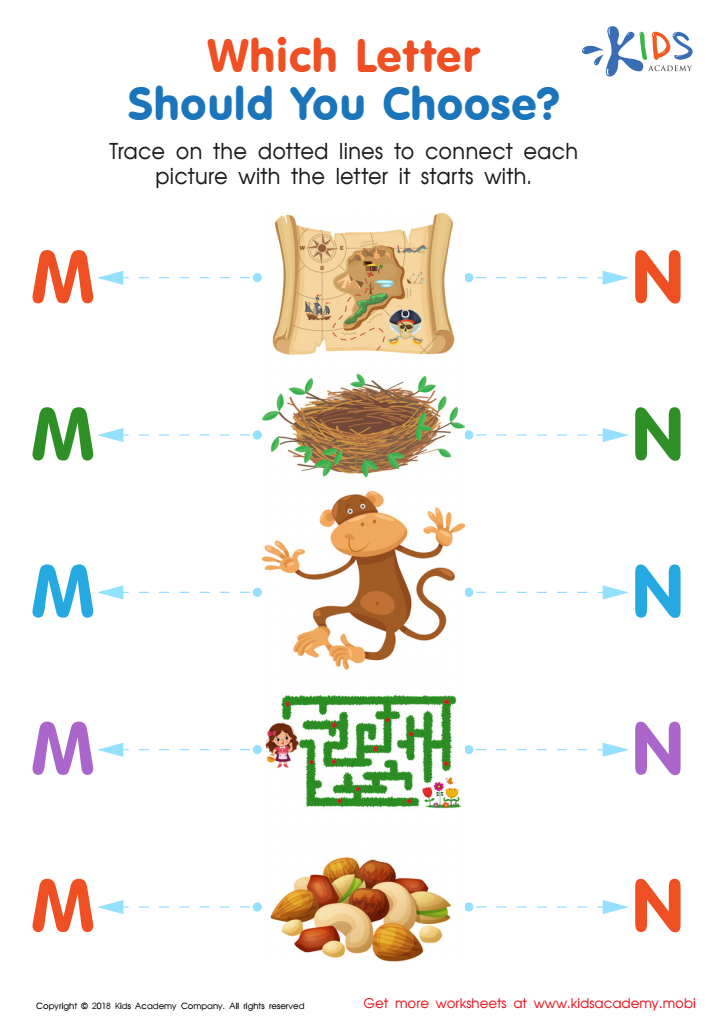

Which Letter Should you Choose? Worksheet
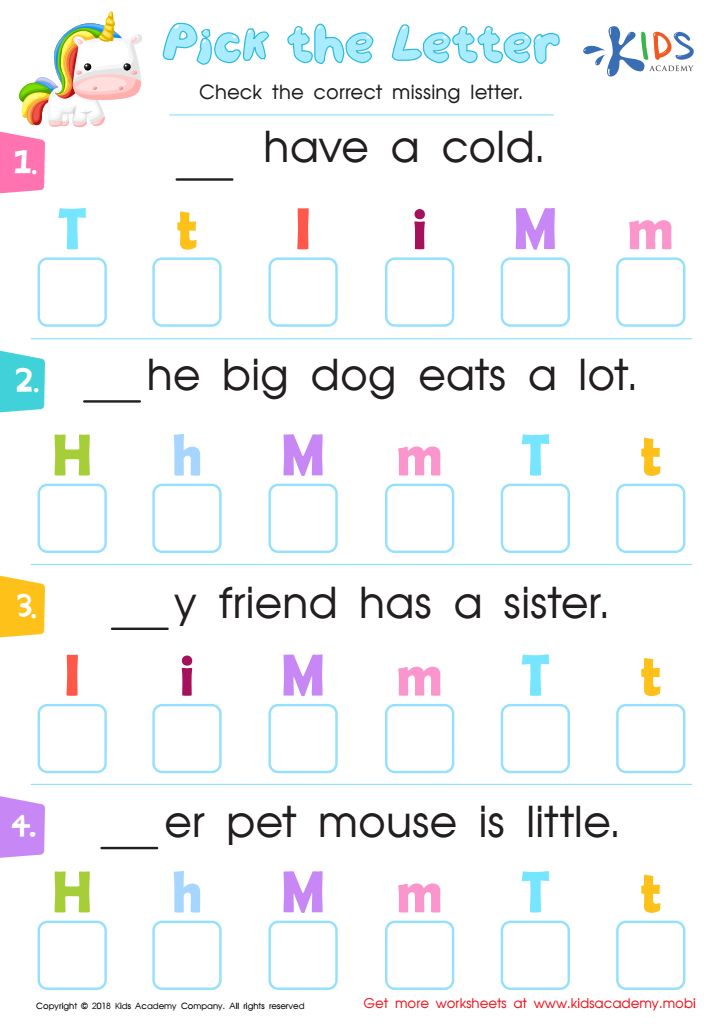

Pick the Letter Worksheet


Missing Digraph: Part 2 Worksheet
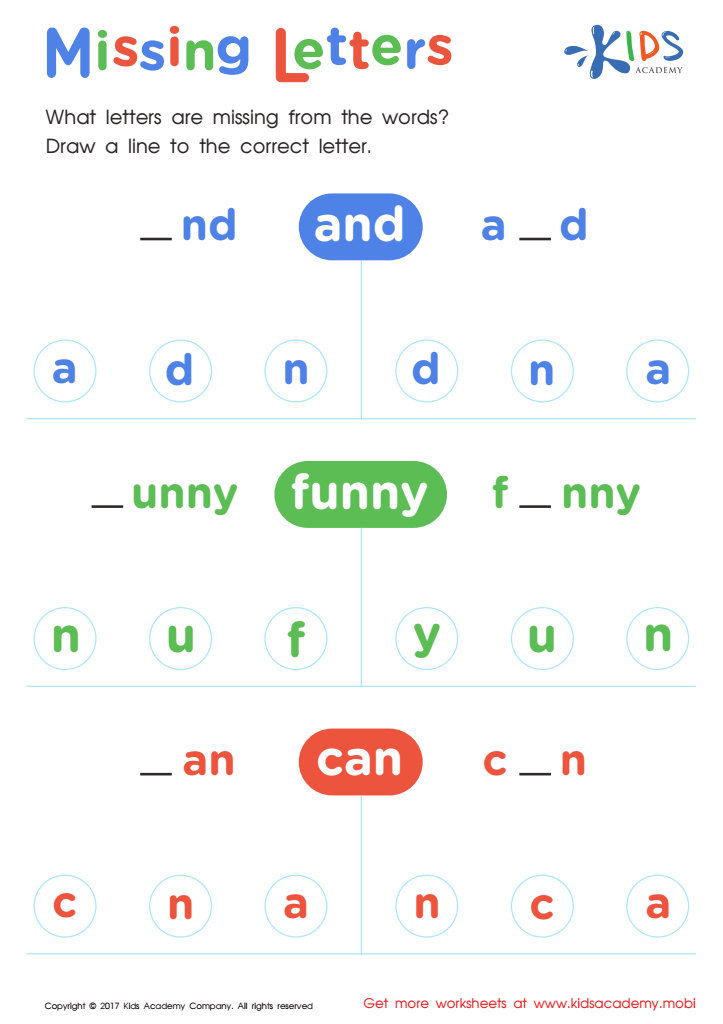

Missing Letters Worksheet
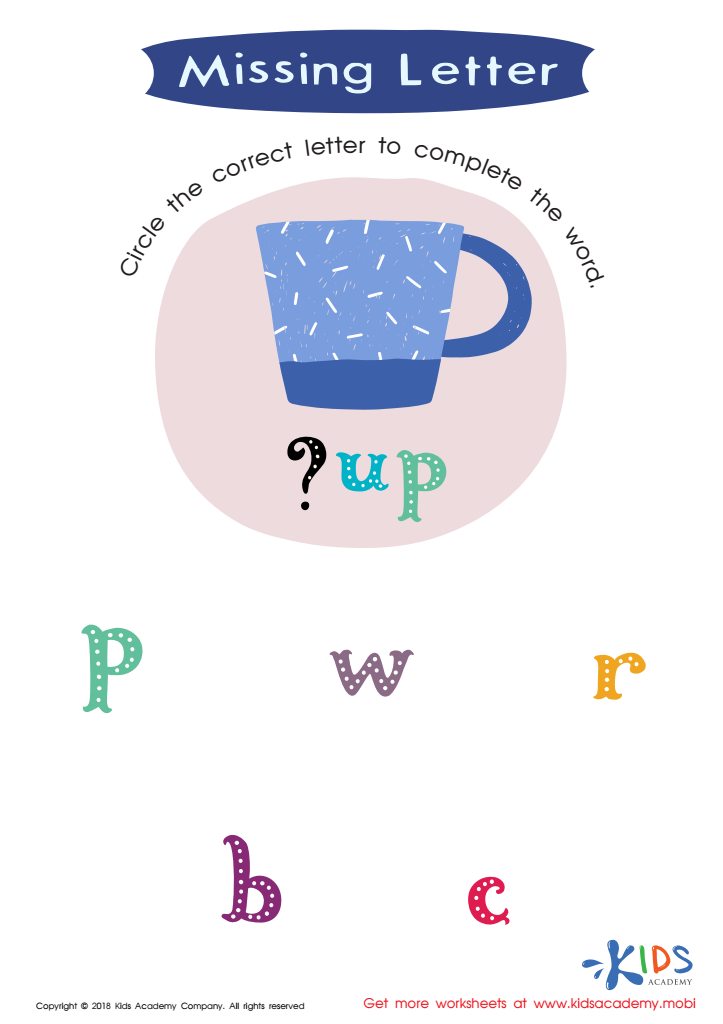

Missing Letter Worksheet
Caring about "Missing Letters" activities for children ages 3-9 is crucial for several key reasons. Firstly, these activities lay a foundational understanding of the alphabet, enabling young learners to recognize, name, and correctly order letters. This recognition serves as a precursor to essential reading and writing skills. When children fill in missing letters, they enhance their knowledge of phonics, which aids in decoding words and constructing accurate spelling.
Moreover, engaging in Missing Letters exercises sharpens observation and memory skills. As kids search for omitted letters, they attentively compare different elements, fostering critical thinking. This practice also promotes concentration and persistence, as children often need to focus intently to achieve the correct answers.
Additionally, letter-related activities can be a fun way to integrate play with learning, keeping children engaged and motivated. For parents and teachers, observing children’s performance offers insights into their current literacy levels and areas needing improvement, allowing for more tailored instructional approaches.
Furthermore, developing strong literacy skills at an early age has long-term benefits, including improved academic performance, better communication abilities, and increased self-confidence. In summary, incorporating Missing Letters activities into early childhood education is instrumental in nurturing competent and enthusiastic young readers and writers.
 Assign to My Students
Assign to My Students










